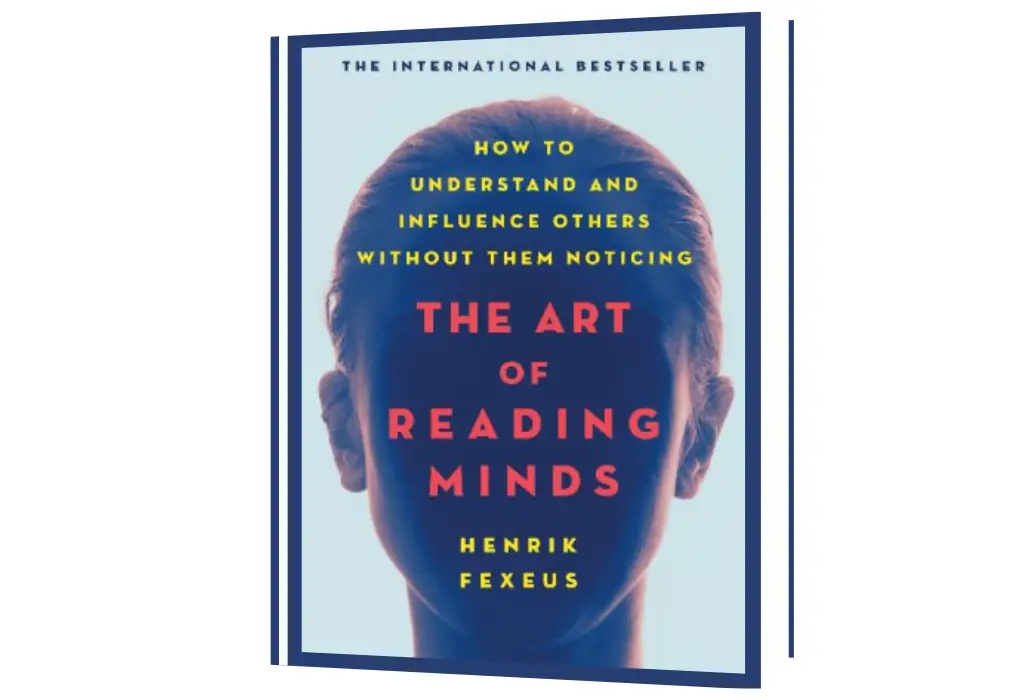A fascinating tour around the world of hidden signals and communication by Sweden’s foremost mentalist. Use this wisely!’ – Derren Brown Learning to mind read isn’t as out there as it may sound. In every interaction we have, we give away a range of non-verbal signals, often more powerful than the words we say. The Art of Reading Minds teaches you how to influence others, bringing them round to your way of thinking. Rooted in cognitive psychology,
Henrik Fexeus explains how readers can find out what another person feels – and consequently control that individual’s thoughts and beliefs. Short, snappy chapters cover subjects like: Contradictory signs and what they mean How you flirt with people without even knowing it Methods of suggestion and undetectable influence How to plant and trigger emotional states Fexeus offers practical tips to master the art of persuasion, which will boost your confidence both in personal and professional settings. Simple exercises throughout the book will heighten your self-awareness, revealing how you are perceived by others. Whether you want to get a promotion, negotiate a pay rise, network like a pro, find romance or spot when someone is lying,
The Art of Reading Minds shows you how to uncover what people are really saying. ‘If you ever wanted to know how a mentalist can tell what is in your mind, then this is the book for you.’ – Joe Navarro, author of the international bestseller What Every Body is Saying.
Key Concepts:
1. Non-Verbal Communication:
– Fexeus emphasizes that much of human communication is non-verbal. He delves into the various ways people communicate without words, such as through facial expressions, gestures, posture, and eye contact. These subtle cues can reveal a lot about a person’s true feelings and intentions, often more than their words.
2. Micro-Expressions:
– Micro-expressions are brief, involuntary facial expressions that occur when someone tries to conceal their true emotions. The book teaches how to recognize and interpret these fleeting expressions to gain insight into what someone is genuinely feeling, even if they are trying to hide it.
3. Body Language:
– Body language is a significant part of non-verbal communication. Fexeus explains how to read a person’s body language to understand their emotional state, confidence level, and even whether they are being truthful. For instance, crossed arms might indicate defensiveness, while leaning forward can show interest and engagement.
4. The Power of Silence:
– Silence is a powerful tool in communication. The book discusses how strategic use of silence can influence conversations, making others reveal more information or reconsider their positions. Fexeus also touches on how to use pauses effectively to emphasize points or to create a more impactful presence.
5. Building Rapport:
– Fexeus explains techniques for building rapport with others, which is essential for influencing them. This includes mirroring body language, matching speech patterns, and finding common ground. When people feel understood and connected, they are more likely to be open to influence.
6. Influencing Others:
– The book explores various psychological principles behind influencing others. This includes understanding the triggers that make people more suggestible and how to frame suggestions in a way that they are more likely to be accepted. Fexeus also covers the ethical considerations of using these techniques.
7. Practical Exercises:
– Fexeus provides practical exercises throughout the book to help readers develop their ability to read minds. These exercises involve observing people’s body language, practicing active listening, and experimenting with different ways to build rapport and influence conversations.
Themes:
– Psychological Awareness:
Fexeus encourages readers to become more aware of the psychological dynamics at play in everyday interactions. By understanding these dynamics, one can navigate social situations more effectively, whether in personal relationships, business, or negotiations.
– Ethics of Influence:
The book doesn’t just teach techniques; it also addresses the ethical implications of using them. Fexeus stresses that these skills should be used responsibly and with consideration for others’ autonomy and well-being.
– Self-Improvement:
By learning to read and influence others, readers also learn a lot about themselves. Fexeus suggests that by becoming more attuned to the subtle cues in others, one also becomes more aware of their own non-verbal communication and psychological patterns.
Application:
The Art of Reading Minds is applicable in various aspects of life, from improving personal relationships to becoming more persuasive in professional settings. The skills taught in the book can help readers become more empathetic and effective communicators, leading to more successful interactions.
Conclusion:
Henrik Fexeus’ “The Art of Reading Minds” is a practical guide to mastering the art of non-verbal communication and influence. By honing these skills, readers can gain a deeper understanding of others and improve their ability to connect and persuade. The book is not just about manipulation but about enhancing one’s communication skills and empathy to create more meaningful and successful interactions.
If you’re interested in mastering the subtle art of understanding and influencing others, this book offers a wealth of knowledge and practical tips to help you do just that. Download the book from below.







